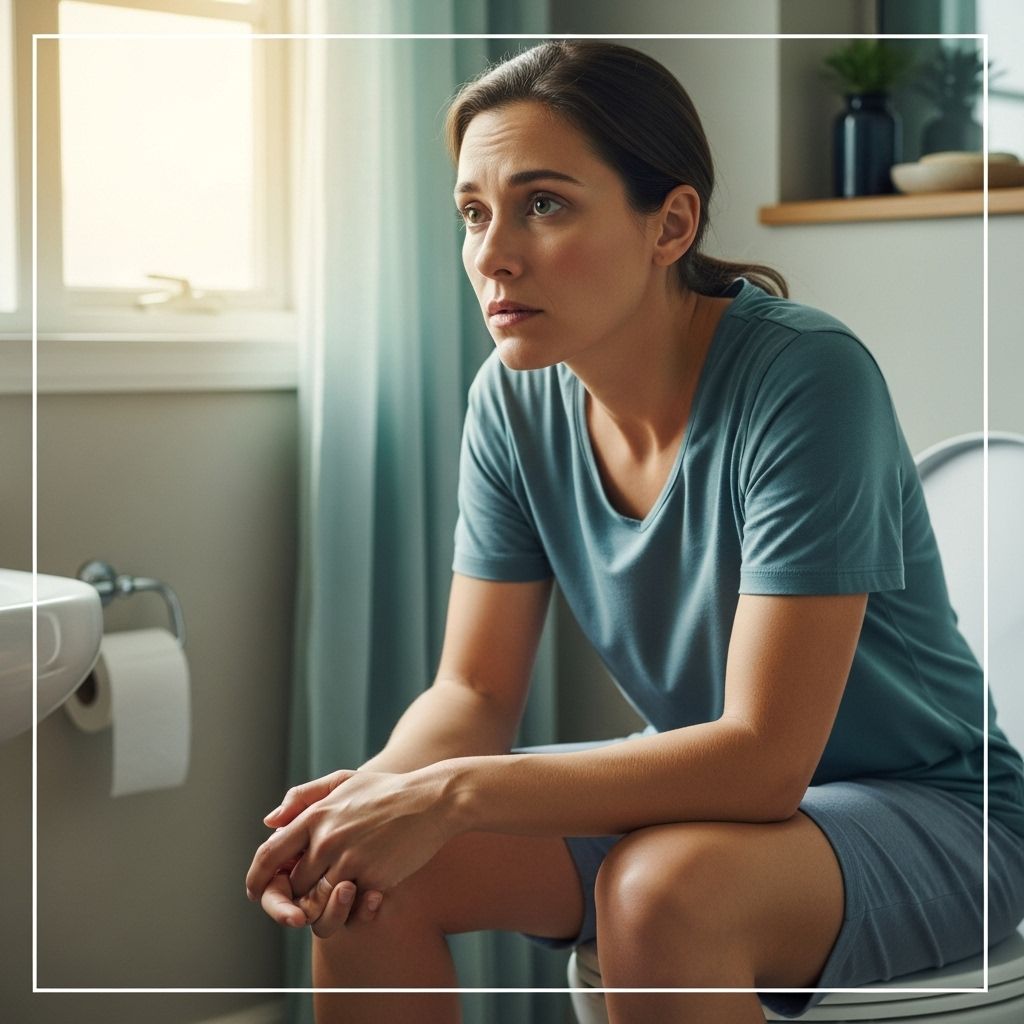9 Expert-Approved Ways to Make Yourself Poop Safely and Naturally
Diet, hydration, and posture tweaks can support smoother, more comfortable digestion.

How to Make Yourself Poop: 9 Safe and Effective Ways to Treat Constipation
Constipation is an issue that affects nearly 1 in 5 adults in the United States, with rates increasing as we age. Temporary blockages can arise due to changes in daily habits, diet, exercise, medications, or health conditions. When it hits, constipation impacts your comfort, mood, and even your overall health. But is it possible to make yourself poop safely and quickly? The answer is yes! Gastroenterologists share practical, medically safe strategies to get your digestive system moving again.
Understanding Constipation: Symptoms & Causes
Constipation refers to infrequent, difficult, or painful bowel movements. Common symptoms include:
- Feeling bloated or blocked
- Stomach pain or cramping
- Hard, dry stools
- Feeling like you can’t fully empty your bowels
Underlying causes include:
- Low dietary fiber
- Dehydration
- Lack of regular exercise
- Ignoring the urge to go
- Certain medications and health conditions
Women (especially during pregnancy), older adults, and people with sedentary lifestyles are more likely to experience constipation.
9 Expert-Backed Remedies for Making Yourself Poop Quickly
Before you reach for harsh laxatives or embark on risky DIY hacks, try these safe, doctor-recommended strategies to ease constipation and stimulate a bowel movement. Most methods target hydration, movement, diet, and toilet positioning.
1. Go for a Walk or Do Mild Exercise
Physical activity is one of the fastest, most reliable ways to jumpstart your digestive system. Walk briskly for 10–30 minutes or do light aerobic movements. Exercise stimulates intestinal motility, helping move stool through the colon.
- Regular exercise improves overall gut health.
- Gentle movements like squats or yoga can also help.
2. Try Some Squats
Squatting naturally improves the angle between the rectum and anus, making it easier to relax and pass stool completely. Even a few squats before entering the bathroom can help trigger movement.
- Squatting lengthens the digestive tract and aligns everything for a more complete elimination.
3. Use a Toilet Stool (Squatty Potty Method)
If squatting isn’t practical, mimic the effects by using a toilet stool (like a Squatty Potty) to elevate your knees above your hips while sitting on the toilet. This bathroom posture relaxes your pelvic muscles and straightens your colon for easier passage.
- Position your knees at a 30–45 degree angle above your hips.
- Any small footstool works—dedicated toilet stools are built for convenience and effective positioning.
4. Eat Fibrous Foods, ASAP
Dietary fiber adds bulk to stool, softens it, and speeds up its movement. If you’re backed up, increase fiber intake with:
- Fresh fruit (esp. pears, apples, berries)
- Vegetables (broccoli, spinach, carrots)
- Whole grains (brown rice, oats, whole wheat bread)
- Beans and legumes
- High-fiber bran cereal
Start gradually to avoid gas and bloating. Focus on soluble fiber, which is gentler on the gut and draws water into the stool.
5. Add Prebiotic-Rich Foods
Prebiotics feed the beneficial bacteria in your gut, enhancing digestion and bowel regularity. Good choices include:
- Bananas
- Onions
- Garlic
- Leeks
- Asparagus
Integrate prebiotics into meals for long-term gut health.
6. Drink More Water
Dehydration is a leading cause of constipation. Drink a full glass of water right after waking up and keep sipping regularly throughout the day. Water softens stool and helps flush waste from the body.
- Aim for 6–8 full glasses of water daily.
- Limit alcohol and caffeine intake, which may dehydrate.
7. Try Prunes or Prune Juice
Prunes are a classic remedy for a reason—they contain sorbitol (a natural laxative) and plenty of fiber. Prune juice is also effective. Consuming prunes or juice in the evening often leads to relief the following morning.
- Eat 4–5 dried prunes or drink a small glass of prune juice.
8. Drink a Cup of Coffee
Caffeinated coffee can stimulate the colon and trigger a bowel movement quickly. Both regular and decaf work, but caffeine may have a stronger effect for most. The warmth also dilates blood vessels and helps activate the digestive process.
- Limit to one cup if you’re sensitive to caffeine.
- Combine with a glass of water for extra hydration.
9. Massage Your Colon
Manual massage can help move stool sluggishly stuck in the colon. Try gentle abdominal massage:
- Lie on your back, knees bent.
- Use your fingertips or hand to press gently in clockwise circles, starting on your lower right side and moving up and across your abdomen.
- Continue for 5–10 minutes as needed.
Comparison Table: Quick Relief Strategies
| Method | Time to Relief | Ease of Use | Expert Backing |
|---|---|---|---|
| Walking/Exercise | 30-60 minutes | Easy, no equipment | Strong |
| Squatting | Immediate | Simple | Strong |
| Toilet Stool | Immediate | Requires stool | Strong |
| Fiber Foods | 6-12 hours | Requires prep | Strong |
| Water | Varies | Very easy | Strong |
| Prunes/Prune Juice | 6-12 hours | Easy | Strong |
| Coffee | 30-60 minutes | Easy | Moderate |
| Massage | Varies | Easy | Moderate |
Lifestyle Tweaks for Constipation Prevention
Beyond quick remedies, maintain regularity with these lifestyle tweaks:
- Schedule meals and bathroom breaks at consistent times.
- Don’t ignore the urge to go—holding it in worsens constipation.
- Pack high-fiber snacks, like fruit or nuts.
- Use whole grain bread instead of white bread.
- Get plenty of sleep and manage stress.
Gradually introduce changes; too much fiber or exercise too fast can cause discomfort.
What to Avoid If You’re Constipated
- Alcohol: Dehydrates your body and intestinal tract.
- Highly processed foods: Low in fiber and often worsen sluggish digestion.
- Frequent use of strong laxatives: Can create dependency and further disrupt gut function.
Frequently Asked Questions (FAQs)
Q: Is it safe to try to make yourself poop?
A: Yes. All the methods listed above are recommended by doctors for safe, at-home relief. If you experience severe pain, bleeding, or prolonged constipation, contact your healthcare provider.
Q: How long does it normally take to poop after trying these remedies?
A: Exercise and toilet positioning may help immediately, while dietary changes like more fiber or prunes tend to work in 6–12 hours.
Q: Should I use over-the-counter laxatives?
A: Reserve laxatives for stubborn cases after trying lifestyle and dietary changes. Chronic laxative use should be supervised by a physician.
Q: Can stress affect bowel movements?
A: Absolutely. Stress disrupts gut motility and can inhibit regular pooping. Mindfulness and relaxation techniques are often helpful.
Q: When should I see a doctor about constipation?
A: If constipation lasts longer than three weeks, is accompanied by severe pain, blood in stool, unintended weight loss, or vomiting, seek medical evaluation.
Key Takeaways for Relieving and Preventing Constipation
- Most people recover with simple changes in diet, hydration, exercise, and bathroom posture.
- Severe, persistent, or painful constipation needs medical attention.
- Consistency is critical: regular habits prevent future episodes.
- Gut health supports your body’s overall well-being—don’t ignore digestive signals.
Expert Insights: Why Do These Remedies Work?
According to Dr. Clinton Snedegar and Dr. Shilpa Ravella—board-certified gastroenterologists—most constipation arises from lifestyle factors. That’s why simple, non-pharmacologic tweaks are so effective. Movement stimulates the gut directly, hydration lubricates stool, fiber creates bulk, and the right toilet posture unfolds your digestive tract for easier elimination. Prebiotic foods and gut-friendly habits promote healthy bacteria, which further support smooth, regular bowel movements.
When Medical Treatment Is Needed
If these remedies do not bring relief after several days, or if your constipation is recurrent and accompanied by other worrying symptoms, consult with your healthcare provider. They may check for underlying conditions or prescribe medications tailored to your needs.
Final Tips for Everyday Digestive Success
- Build movement into your daily routine, even if it’s a walk around the block.
- Eat and hydrate regularly—don’t wait for your body to signal distress.
- Adjust toilet posture for maximum relaxation and efficiency.
- Prioritize sleep and stress management to support your gut and overall health.
- Listen to your body and respond to the urge to go.
Sources & Further Reading
- Healthgrades: Natural and Home Remedies to Relieve Constipation
- Good Housekeeping: How To Make Yourself Poop – 9 Safe Ways to Treat Constipation
- Canadian Digestive Health Foundation: Constipation—What to Do if You Can’t Poop
- Medical News Today: Best Poop Position—Tips for Relieving Constipation
References
- https://resources.healthgrades.com/right-care/digestive-health/how-to-make-yourself-poop
- https://cdhf.ca/en/constipation-what-to-do-if-you-cant-poop/
- https://www.goodhousekeeping.com/health/a33865561/how-to-make-yourself-poop/
- https://www.medicalnewstoday.com/articles/best-poop-position
- https://www.goodhousekeeping.com/uk/health/health-advice/a559780/how-to-help-constipation/
- https://www.health.harvard.edu/staying-healthy/8-ways-to-get-constipation-relief
Read full bio of Sneha Tete












